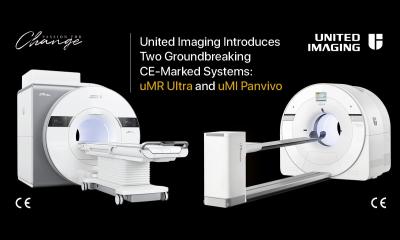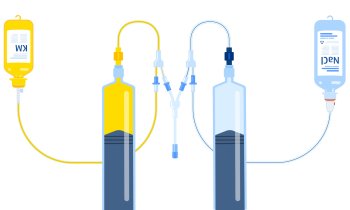News • Backlog
A worrying age increase of imaging equipment
A recent Medical Imaging Equipment Age Profile report from AXREM provides worrying reading. The report highlights the continuing increase in the age of the installed base of medical imaging equipment across the United Kingdom.
In recent years advances in Computed Tomography (CT) technology have allowed required radiation doses to be lowered, reducing the exposure risk to patients. Despite this, the age profile of scanners as detailed in the AXREM report suggests that many patients are being scanned on equipment that fails to benefit from the latest dose saving measures. Furthermore, some 110 scanners in the UK are now in excess of 10 years old. (Source: AXREM UK Statistics)
The industry is continuously innovating to develop equipment that optimises levels of radiation whilst maintaining or enhancing the quality of images, as well as increasing the patient throughput. All stakeholders should share this commitment to reducing patient radiation dose and increasing capacity. The benefits to patients and clinicians of renewing the Medical Imaging Technology base are clear and irrefutable.

Golden rules
The European Society of Radiology has recognised the clinical importance of planning for timely replacement of equipment. In 2014, it published a position paper on renewal, stating that; “Equipment less than five years old is state-of-the-art technology. Properly maintained equipment between six and ten years old is suitable for practice, but radiology departments should develop a strategy to replace them. Machines over ten years old must be replaced.”
The issue of ‘technological obsolescence’ can often go unnoticed; it is influenced by an imbalance between the pace of incremental innovation on the one hand and the rate of equipment replacement on the other. Using this as a basis COCIR (the European Trade Association representing the medical imaging, radiotherapy, health ICT and electro-medical industries), drafted a set of pragmatic and prudent ‘Golden Rules’, recommending that an appropriate mix in the age profile of installed equipment is essential for efficient and productive healthcare systems. These rules support evaluation of the medical equipment installed base and aid procurement processes. They take into account the need to balance the benefits of innovation against the obligation to derive maximum value from capital investment.
The Golden Rules are:
- At Least 60% Of The Installed Equipment Base Should Be Less Than Five Years Old.
Medical technology life-cycle averages suggest equipment that is up to five years old adequately reflects the current state of technology with opportunities for economically viable upgrade measures.
- No More Than 30% Of The Installed Equipment Base Should Be Between SixTo Ten Years Old.
Medical technology that is between six and ten years old is still fit for purpose. However, systems replacement strategies should be developed to benefit from efficiency gains afforded by the latest technologies.
- No More Than 10% Of The Age Profile Should Be More Than Ten Years Old.
Medical technology more than ten years old is outdated and challenging to maintain and repair. Compared with current medical guidelines and best practices, it can be considered obsolete or inadequate for conducting some procedures; replacement is essential.
Obsolescent technology is undermining patient safety
Lack of investment has resulted in both an aged installed base and a lower density of scanners per million population compared with other European countries. The continued use of older equipment potentially exposes patients to unnecessary risk. Manufacturers focus on developing more and more sophisticated techniques to reduce the dose of ionising radiation that a patient receives during a CT scan, whilst optimising image quality. Some of these technology developments are inherently only available within the latest generation of scanners. The age profile of scanners within the AXREM report suggests that many patients are being scanned on equipment that fails to benefit from the latest dose saving measures.
Increasingly, rapid incremental innovation offers benefits for a growing and ageing population. However, there is a serious lag in implementation. If we want societal benefits for all patients equally, then all stakeholders must urgently address this delay. AXREM calls upon healthcare providers to focus on dose reduction and optimisation when replacing ageing equipment in order to enhance patient safety.
Why innovation matters
Innovative medical technologies have always been a major driving force for improving healthcare quality. However, such technologies can now provide much more, driving integrated patient-centric care pathways that can improve the efficiency and productivity of healthcare. Investing in innovative products and solutions can improve patient safety and productivity. Each year, engineering and IT advances, coupled with a greater understanding of disease at a molecular level, deliver innovation in medical technology. For the installed base of medical imaging equipment, advances are often incremental, improving current processes while extending the usefulness of medical imaging equipment. These developments often offer clinicians with unprecedented visual and functional information about their patients and facilitate faster, more intelligent diagnostic imaging systems that support decision-making, reduce complexity, improve clinical outcomes, improve health economics and increase productivity.
Since these advances are often incremental, industry offers upgrades that help extend the life of equipment over a defined period. However, as equipment ages, increasing numbers of technical incompatibilities and obsolescence render updates uneconomical, and sometimes no longer possible. Furthermore, such obsolescence can extend to operating system software within the imaging equipment. The ransomware cyber security attack, which impacted a number of NHS Trusts in May 2017, has highlighted security issues associated with networks and operating system software. Older imaging equipment may not be capable of being updated to increase protection against such cyber security attacks.
Computed Tomography (CT)
According to a survey of AXREM member organisations, some 55% of CT scanners in the UK are more than 5 years old, with 12% being over 10 years old. AXREM believes that investment in the installed base should be accelerated to improve patient safety and highlights the significant enhancements in the technological, medical and regulatory areas. These include CT Dose modulation and CT Reiterative reconstruction algorithm technologies, which dramatically reduce the required X-Ray dose. For example, reductions of >50% in paediatric imaging without a loss of diagnostic quality have been published. These software applications, available as upgrades, also improve hospital efficiency, clinical effectiveness and reduce costs.
Dose modulation technologies automatically calculate the optimum tube current for each anatomical area and the real-time current control for the X-Ray tube. Thisensures patients receive the minimum dose necessary; (the ALARA principle – as low as reasonably achievable). Reiterative reconstruction algorithm technologies reproduce higher dose protocol scans using raw low-dose scan data. This reduces the absorbed dose and provides higher quality images for the same exposure.
Magnetic Resonance Imaging (MRI)
The Clinical Imaging Board published its own report on MRI scanners in the NHS in April 2017. According to a survey conducted across the NHS (which represented 42% of the UK install base of MRI systems), some 56% of systems were over 5 years old and 29% were more than 10 years old. This compares with AXREM's own 2016 survey which suggests across the total installed base that 54% of systems are over 5 years old with some 20% being over 10 years old. AXREM commends the Clinical Imaging Board report findings and recommendations.
Addressing the financial challenge of implementing innovations
Innovative imaging technology offers a real opportunity to improve clinical care and patient safety. Furthermore it can support operational efficiency improvements. The drivers of change are universal, including increased efficiencies, increased access and improved clinical outcomes. However, adapting funding mechanisms will also be fundamentally important. All too often short-term financing constraints and silo budgeting can compromise early adoption of new technologies. Many purchasing decisions are dominated by capital price criteria, and can fail to consider the wider ‘incremental value’ that new technologies provide.
Acknowledging the capital funding barriers that often prevail within the NHS, equipment suppliers and third parties offer a range of new business models to facilitate adoption of new technologies. These include Leasing, Managed Equipment Services, and a variety of rental and usage based tariff solutions. These can shift funding from capital expenditure to a more predictable operational expenditure, whilst also including an element of risk-sharing. This arguably provides the variety of financial platforms to allow innovative solutions to reach more patients. Given appropriate contracting and investment, more hospitals and patients in the UK will benefit from greater efficiencies and improved outcomes afforded by ongoing advances in medical technology.
Source: AXREM
09.08.2017











